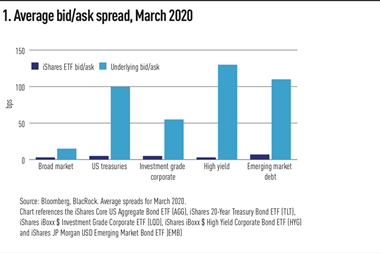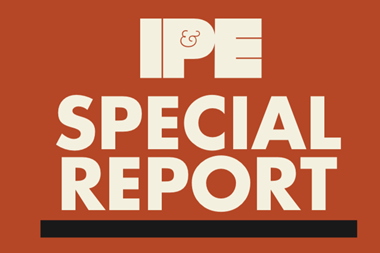Schemes need to consider how to get to a secure level of funding, but also, the assets they will need to hold when they reach peak cashflows in order to remain fully funded
The end game for UK pension schemes is fast approaching, a sharp focus brought on by The Pensions Regulator (TPR) mandating that schemes set a long-term funding objective.
Of course, schemes need to consider how to get to a secure level of funding – that is a known problem. But less attention is on the assets they will need to hold when they reach that point.
We would argue this is a more pressing issue than trustees are currently considering, and the longer they delay, the more costly it will be to address.
Analysis completed by TPR suggests that benefit outflows for many pension schemes may be close to their peak already. If a scheme is not well funded and holding suitable assets when it reaches its tipping point of peak cashflows, the scheme’s funding level would deteriorate just through the process of paying pensions.
What is the size of the problem?
UK pension schemes have been on a de-risking journey for some time by switching out of growth assets, in particular equities. The speed of this transition has accelerated in the last five years, supported by the longest bull market in history.
Pension funds have instead switched into government and corporate bonds, and this time are meaningfully insulated from falling Gilt yields by a prodigious increase in liability hedging.
As a scheme approaches full funding on a low risk basis, they will need to lock down risk by further matching sensitivity to changes in interest rate and inflation, but also thinking more consciously about matching cashflows as they fall due.
This will naturally lead to deleveraging of LDI portfolios. This has been accelerated by the continued rise of insured risk transfer activity and now also the emergence of consolidators.
We believe approximately £1trn of liabilities remain exposed to changes in interest rates and inflation. In addition, in the region of £250-£300bn of exposure will be converted to physical exposure from derivatives as schemes deleverage their LDI portfolios.

That is a great deal of activity for capital markets to cope with even at a global measure, let alone in the UK. This is intensified by the narrow set of assets that ideally would be purchased.
Musical chairs
A large proportion of this de-risking will likely continue to be met by purchasing UK government bonds and sterling credit. Combine this with how soon they need to be purchased, as most UK schemes are maturing and de-risking rapidly together, and prices will be driven higher still.
It will therefore be even more expensive to buy UK government bonds (particularly longer dated index-linked Gilts), and even harder to find good quality, suitably yielding, credit assets.
Over the next five years, some estimates suggest the UK government will need to issue £1.25trn of Gilts to meet expenditure of the current crisis. Problem solved? Not quite; whilst there is a chance that much of this new issuance could be useful for pension funds and insurers, if UK pension funds could afford to buy only gilts in the first place we would be talking about a different problem.
The size of the sterling investment grade credit market is approximately £375bn in size, with roughly £60bn issued in new corporate debt last year. Debt issuance has exploded in recent years with the cost of issuance being particularly cheap due to the low interest rate environment.
In addition, quantitative easing programmes in the UK, US and Europe have been widened to include the purchase of corporate bonds. To put the sterling credit market in to context, the euro investment grade credit markets is €2.4trn in size and with over €660bn of new issuance last year, and both pale in comparison to the US.
It therefore appears that corporate bonds may be a source which can help fill this gap at a more affordable level for UK pension schemes. However our initial analysis shows that the race to purchase high quality credit – the kind a scheme would want – may have already been began.
What will be left for those pension schemes who are looking to purchase credit later is likely to be lower quality credit (and/or lower yielding). We have already begun to see this trend in the aggregate, with UK pension schemes’ share of investments in BBB credit having increased in recent years.

Although you have greater issuance, and brand new issuers in the market, the quality of marginal issuance relative to debt outstanding is worsening. This race is only exacerbated by insurers having a significant demand for the same type of UK credit assets.
UK firms issuing more debt is unlikely to be the answer. Non-UK issuers already account for around 50% of sterling issuance. We are likely to see more in the future.
However, Brexit does put a cloud over this, in particular sterling issuance being expensive relative to US dollar and euro domestic issuance. Lots of issuers are waiting until after that clears to decide whether this is the market they want to issue long-dated credit in.
Where does this leave us?
The implication of this is that de-risking is not just about setting a suitable journey plan or glide-path. We need an even wider lens through which to consider a truly integrated risk management framework, one that includes opportunistically de-risking ahead of plan if circumstances permit, to avoid a costlier decision later.
In this race, de-risking later may cost scheme sponsors far more than biting the bullet sooner, as credit spreads fall and schemes are forced to buy more gilts than expected.
If this trend continues, those who choose to de-risk later may well find that they are not so low risk as they had hoped.
By Nikesh Patel, head of investment strategy, and Arif Saad, senior investment strategist, Kempen Capital Management UK



















No comments yet